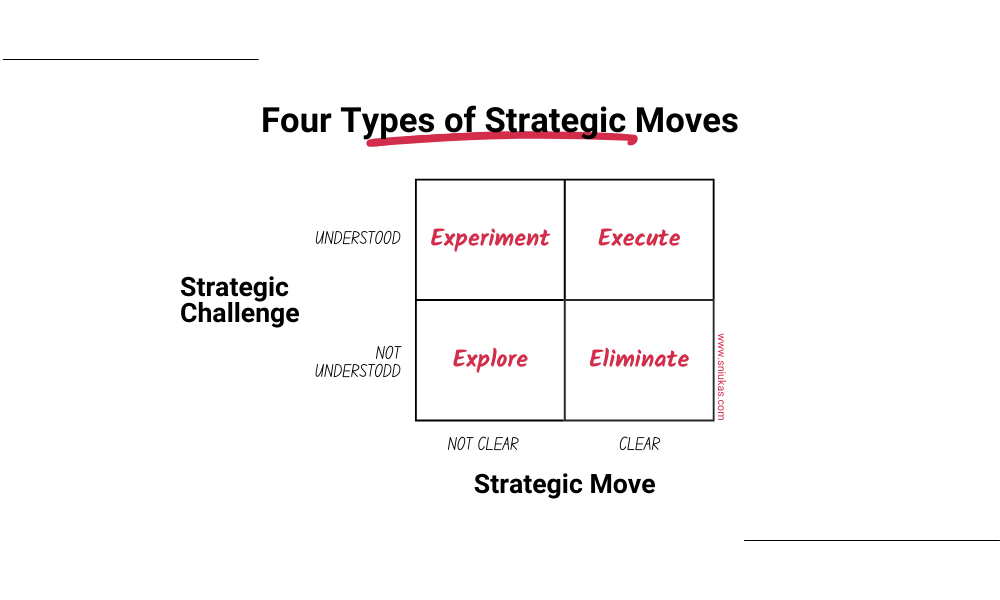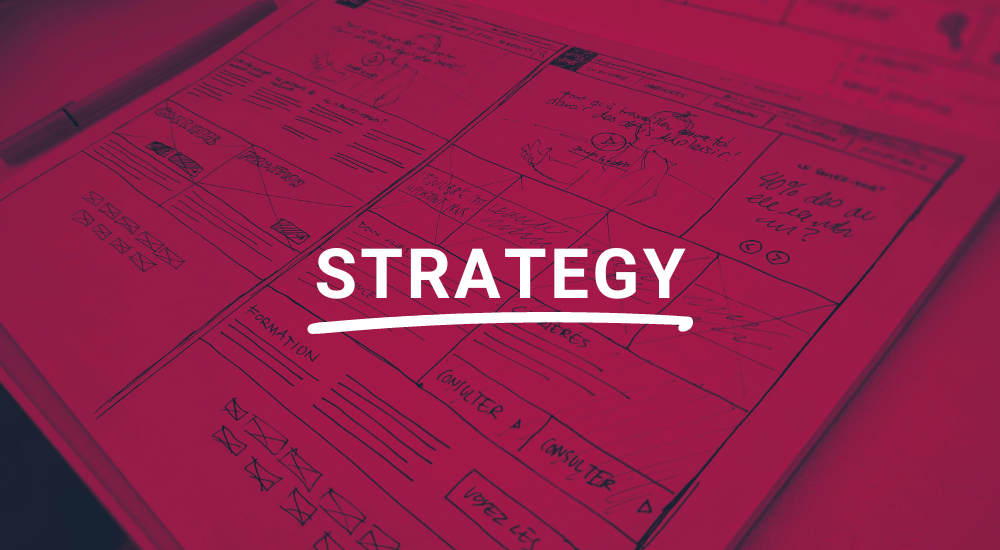Strategy Triage: How to Prioritize your Strategic Moves and Business Decisions
During heated discussions in executive team meetings, it is sometimes difficult for everybody to stay focused on the stuff that really matters. At...
5 min read
Dr. Marc Sniukas
May 24, 2023 12:00:00 AM
You're not alone.
Many small to medium-sized business owners and operators face these challenging feelings.
And as a result, they often waste a lot of time and energy either in avoidance….
…or they overdo it for where they and their business are at right now.
Either way, it drains the spirit & leaves a bad taste in the mouth after experiencing either.
But what if I told you there is a fast, effective way to realign your company’s strategy?
In this article, I want to show you the FAST Strategy process that will help your business to:
Plus, we'll dive into the 4 Types of Strategic Moves you can make NOW!
To start making strategic moves, you first need to gain clarity on where to focus your efforts. The Fast Strategy process consists of three simple steps:

Execute: If both the challenge/opportunity and the strategic move are clear: It's time to execute! These are the no-brainer actions that everyone agrees should be done.
Experiment: If the challenge/opportunity is clear, but the strategic move is unclear: It's time to experiment. In the next section, we’ll go over how to allocate resources to test different paths toward achieving the strategy. When it is unclear, and there are multiple viable paths, it is in your best long-term interest to have the ability to test and see which one works best.
Explore: If both the challenge/opportunity and the strategic move are unclear: You need to explore the situation further. Spend some time researching the topic, pay to consult with some expert(s), talk to customers, and network within the industry to learn more about your options.
Eliminate: If the strategic move is clear, but the challenge/opportunity is unclear: It's best to eliminate it. These are likely pet projects that don't solve a challenge or seize an opportunity.
For example, in one of my clients, the head of IT thought it’d be a good idea to start offering IT services outside the company. She saw an opportunity to generate additional revenues, pretty much like Amazon did with AWS. But the company had no competitive advantage over any other IT service provider, and focusing on external customers, created a lot of frustration internally, as IT was always busy with these external customers and not available for internal support.
To ensure you are focusing properly across the different Strategic Moves you can make…
A good base framework for resource allocation is the 70-20-10 framework:
Here resource allocation is all about striking the right balance between Execution, Experimentation, and Exploration.
It takes a vigilant eye and team culture to ensure that things that should be Eliminated do not leech away your resources.
Apply your resources in the places where they will have the most leverage and create the most impact.
To ensure a successful FAST Strategy session, follow these guidelines:
By implementing the FAST Strategy framework, teams see these happen immediately:
Over time, you will see continual growth in deeper benefits like:
The Four Types of Strategic Moves framework provides clarity on what needs to be done and how to prioritize initiatives.
This helps your business to focus on the most important actions it can take. By doing that, you avoid wasting resources on initiatives that won't deliver results.
The framework is flexible and can be adapted to fit the needs of any business. It allows for experimentation and exploration, which can lead to new ideas and breakthroughs.
The Four Types of Strategic Moves framework helps build alignment around the strategy.
By prioritizing initiatives and actions that can deliver the most impact, teams can work together towards a common goal.
More importantly, they’ll feel the momentum and impact of their work…
…and will not feel the drain that comes with wasting time and resources on activities that ultimately are not aligned with the company's objectives.
When a business uses the Four Strategic Moves framework, they can better hold themselves accountable for their actions. By setting specific goals and monitoring progress, teams can ensure that they're on track to achieve their objectives.
The Four Strategic Moves framework helps businesses optimize their resources.
Resources are consciously allocated to where they will best drive current results & create best future opportunities.
Using FAST Strategy and the 4 Strategic Moves will help your business prioritize its efforts and get your team aligned.
By creating a prioritized listing of things to do, you can then assign each action to an upcoming Sprint.
Whatever cadence you run to get things done, use it to create tangible progress on your strategic priorities each week.
And remember, FAST Strategy is just one step of the journey.
And it is not a substitute for a comprehensive, long-term strategy.
While it can help your business prioritize initiatives and make progress quickly…
…it ultimately is aimless if you do not have a clear vision and roadmap for the future.
FAST Strategy should be seen as a complement to, rather than a replacement for, traditional strategic planning.
Lastly, Fast Strategy is not a one-time exercise.
Ideally, it is a recurring process that you refine as you do it each month, quarter, or year (depending on what makes sense for your team).
Firmly dedicate yourself to a culture of continuous improvement and a willingness to embrace failure as a learning opportunity.
We all know we get our fair share of such learning opportunities in business (and especially as we adopt new ways to articulate & execute on strategy).

During heated discussions in executive team meetings, it is sometimes difficult for everybody to stay focused on the stuff that really matters. At...

You are probably thinking ‘shareholder value’ right now, aren’t you? Shareholders are no longer the only constituency for whom companies need to...

When you start thinking about your strategy, you first need to honestly evaluate what is going on, both inside your organization and in the market....